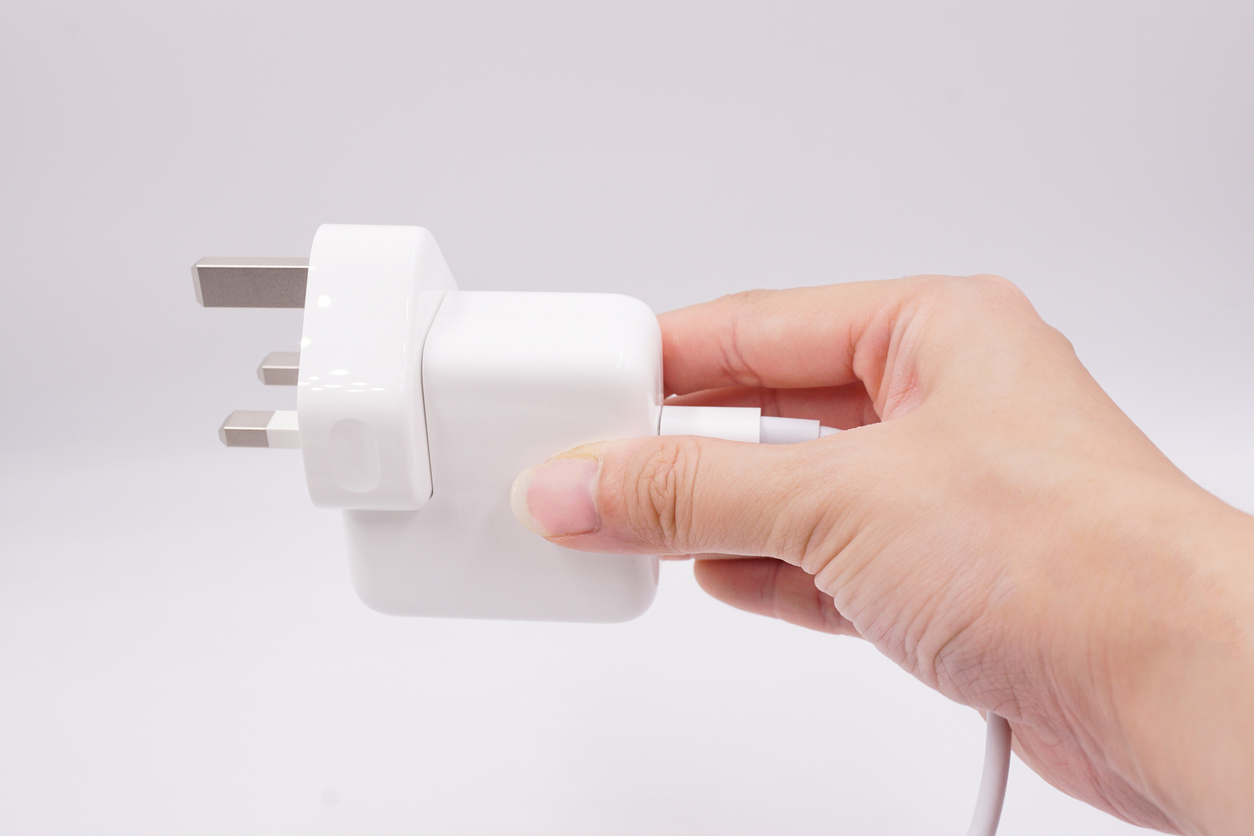Any mobile or tablet device needs charging, and the iPad is no exception. While the latest iPhones offer wireless charging, the trusty iPad still requires a physical charging cable and plug. Consequently, a power adapter and cable are provided with all new iPads, usually a USB-C cable and 20W power adapter, making charging easy.
However, is there a hidden cost of ownership here that often goes overlooked, particularly in business?
Anyone who has used, or is using, an iPad or iPhone will no doubt testify that at some point in the life cycle of their device they have had to buy a replacement charging cable and adapter, whether that be because they have lost their original, or it is damaged/broken, or simply as a second one for a dedicated location.
Cost of replacing charging cables and adapters
Official Apple replacement cables and adapters will set you back between £20 and £40 ($25-$50) each time. Cheaper non-Apple authorised versions are available ranging from £10 to £30 ($12.5 to $37.50) although with these alternatives you take the risks of how well they work and whether they have had the necessary safety checks.
As an individual you probably think these costs once or twice during the lifetime of the product (estimated by recent industry statistics to be at 3.6 years for the average consumer) to be acceptable. However, imagine if you are a business with a large estate of hundreds of devices in use, where as a policy, the business would probably opt for using official or approved Apple charging adapters. The cost could be significant.
For example, imagine a company with 1000 iPads, who had to replace 40% of its charging cables at an average price £20 per cable & adapter. That would be an additional £8000 spend straight off of the bottom line.
Significant saving
In fact, there is no need to imagine. One of the customers using the Tough-PAC cases was spending over £20,000 per year on replacement charging cables and adapters. As a healthcare authority, with several hundred devices, it was not uncommon for cables and charging adapters to get broken or go missing – either ‘borrowed’ to charge a personal device or stolen.
While this saving could have gone a long way justifying the business case for moving to Tough-PAC, this only came to light after the customer decided to deploy the Tough-PAC system. The realisation of the additional benefit of a platform that eliminates the need for individual charging cables per device by using either single or multiple device docking stations for charging. Something that is not offered by all case systems.
An added benefit
As an additional benefit, the trust removed the chaotic and messy tangle of cables where multiple devices where being charged, as well as the need for additional power sockets. Instead many of their wards are equipped with a multi-dock charge station with one dedicated power cable which rarely needs replacing or goes missing.
Conclusion
Charging cables often go unconsidered in the evaluation of mobile technology deployments, based on the grounds as the device often comes with its own charging cable. However, in a business or work environment, you will have to factor in replacement for possibly up to 50% of your devices, particularly if they are shared devices or being used in common areas. Even if you invest in protective cases, not all solutions eliminate the need for individual power cables – in fact many of the ‘cheaper’ alternatives still use the cables supplied with the iPad.
Consider a platform that offers charging docks or base stations – anything else could be a false economy!
How can we help?
Both the Tough-PAC and IPORT ranges offer charging options that eliminate the need for individual charging cables – what we consider cable-free charging. Contact us to find out more

